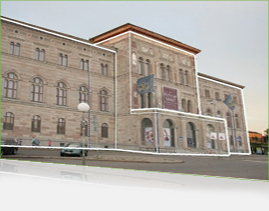For most researchers outside of the field, Human Computer Interaction (or HCI) is the study and evaluation of interactive systems and techniques. While this is an important part of our discipline, nowadays HCI is as much about _building_ the underlying technologies and systems as it is studying their use. In this talk I will demonstrate why it is an exciting time to be a computer science researcher in this discipline. You can play with the newest technologies, such as exotic cameras, displays and sensing hardware; readily embrace approaches outside of your discipline (e.g. within computer vision, machine learning, signal processing, or computer graphics); and even invent technologies and algorithms along the way. However, ultimately, you'll build working systems that are grounded by real-world problems that have direct impact on users.
The Interactive 3D Technologies Group at Microsoft Research Cambridge, UK, has been born out of this new approach to HCI research. I will demonstrate examples of projects within the group, which are all motivated by pushing the boundaries of how people can interact with computers, but doing this through technical and systems innovation. These projects move computing beyond the mouse and keyboard into the physical world around us. A key part in this work is blurring the lines between the digital and physical worlds. The group is multi-discipline in nature, allowing us to not only to embrace but invent technologies and techniques from fields such as optics, computer vision, robotics and computer graphics. The talk will also hint at exciting new technologies around the corner – some of which our group is working on – which will be critical building blocks for like-minded researchers in the future.
Clearly there are many parallels between being an HCI researcher and an AR researcher. We both celebrate building working systems, embrace new technologies, focus on real-time techniques, and systems that have direct user impact. My talk will argue that by bridging the gap between disciplines such as AR and HCI, we can solve grander challenges, such as making augmented reality a reality, and moving closer to one day building the HoloDeck (note: being a Star-Trek fan is not a requisite for this talk!).
This will be an interactive session, with demos, videos, and hopefully not too many explosions (unless one of the GPUs in my ridiculously big laptop overheats).




